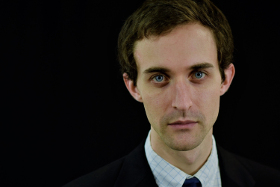by Mike Telin

This week Les Délices will return to the music of Rebel when they present a program titled “The Elements” which is centered around Rebel’s 1737 masterpiece of the same name. The program also includes music of Rameau and the premiere of a new, nature-inspired piece for period instruments by Theo Chandler.
Concerts take place on Friday, April 5 at 7:30 pm at Akron’s Holy Trinity Lutheran Church, Saturday the 6th at 8:00 pm at Lakewood Congregational Church, and Sunday the 7th at 4:00 pm in Herr Chapel at Plymouth Church. Tickets are available online. On Saturday beginning at 3:00 pm at the Bop Stop, Les Délices will present “Mother Nature Makes Music,” a free 45-minute program designed for children ages 5-12.
When Les Délices founder and artistic director Debra Nagy began thinking about programming the final concert of the ensemble’s 10th anniversary season, she wanted to present a work that represents the apex of French Baroque style but also looks to the future.

Performers include Kathie Stewart (flute), Debra Nagy (oboe and recorder), Julie Andrijeski and Scott Metcalfe (violins), Steuart Pincombe and Jaap ter Linden (violas da gamba), Anna Marsh (bassoon), and Mark Edwards (harpsichord).
Why has Nagy returned to the music of Rebel so often? “He was a real innovator,” she said. “In the 1690s he was the first to write sonatas. He was a great violinist, and there’s an incredible marriage in his music between straight-up beauty and virtuosity, both of which are appealing to audiences.”
Nagy noted that Rebel’s music also served as showpieces for the dancers during his lifetime. “He was an innovator not just musically, but also in form. The French were obsessed with ballet in the context of opera, and Rebel had strong personal relationships with some of the best dancers at the time. He also had a fascination with art for art’s sake. He had a long career and his music is quite varied, so it’s something that has been wonderful for us to return to time and again.”
In her program notes, Nagy writes, “Drawing selections from Rameau’s operatic oeuvre, we’ve created our own short suite representing the four elements: the grinding, earth-bound fugue of the ‘Ritournelle’ from Hippolyte et Aricie (1733) makes a stark contrast to the ethereal, flowing lines of the ‘Entrée de Polymnie’ from Boréades (1764) while the foreboding, undulating waves of the ‘Frémissement des flots’ (Hippolyte et Aricie) give way to a terrible storm. Rameau’s chilling musical earthquake from Les Indes Galantes (1735) depicts the wrath of an Incan high-priest hurling rocks into a volcano.”
Nagy said that it was the “new music” element of Rebel’s “Le Chaos,” the introduction to Les Élémens, that inspired her to commission a piece that would view Rebel’s work through a 21st-century lens. In his composer notes Theo Chandler writes, “In his work, Rebel boldly breaks convention for a striking depiction of Chaos. With Rebel as inspiration, I chose to write a piece that pronounces sonic imagery as its primary focus.”

Chandler is currently pursuing his Doctorate of Musical Arts at the Rice University Shepherd School of Music. He is the recipient of a Charles Ives Scholarship from the Academy of Arts and Letters and a Morton Gould Award from ASCAP. He received his previous degrees from The Juilliard School and Oberlin Conservatory.
This is Chandler’s first composition for period instruments. “I’m always looking for new opportunities and I was excited to get this one,” he said, adding that the process has been a learning experience. “Debra pointed out that the instruments are tuned to A=392, which is not as bright-sounding as modern instruments. I’ve enjoyed writing for viola da gamba — the way it’s tuned provided me with many chordal options. And although I’ve never written for harpsichord, I love the sound — it has such sparkle.”
When preparing to write the piece, Chandler said that he listened to all of Les Délices’ recordings and was impressed by the many colors the group was able to produce. “I really liked the jazz-inspired album, Songs Without Words, and if they can do that, there was no need for me to feel closed in at all.”
Published on ClevelandClassical.com April 1, 2019.
Click here for a printable copy of this article



